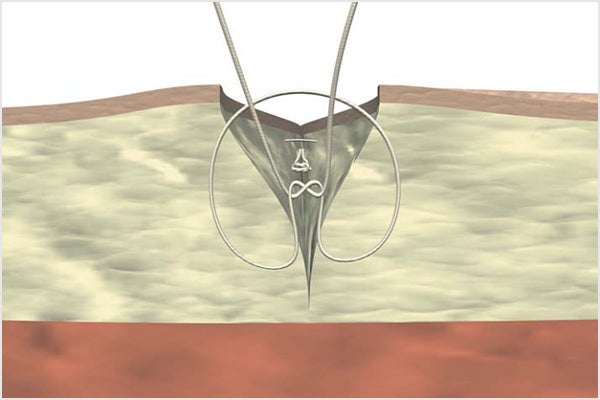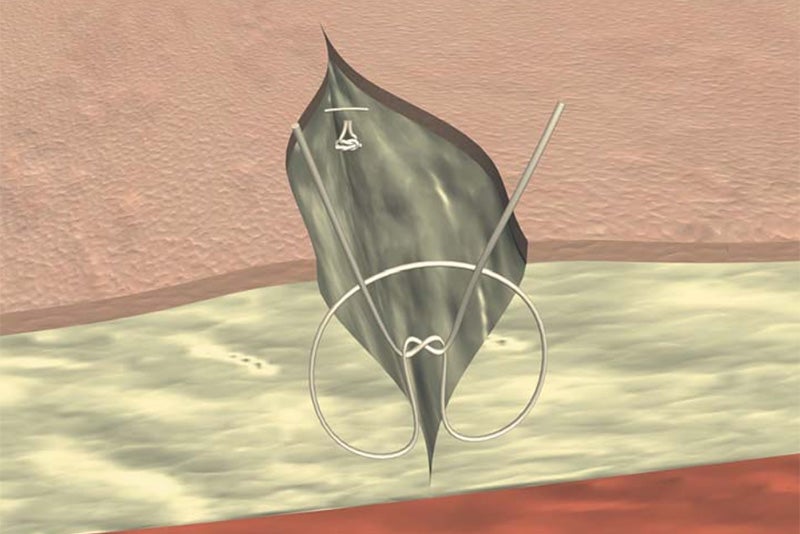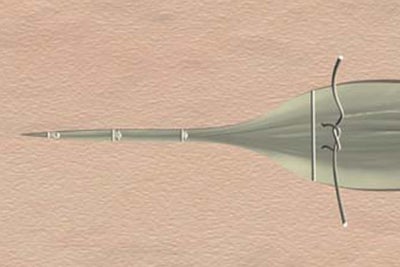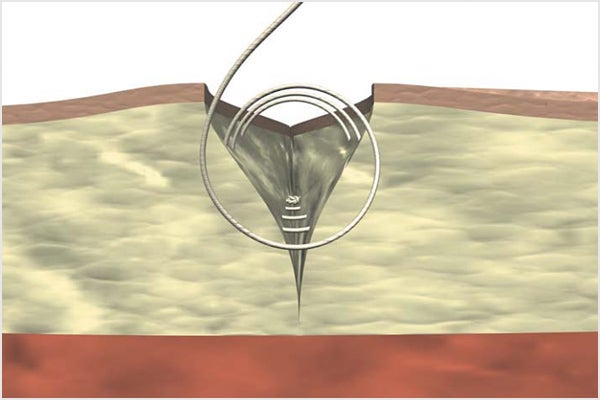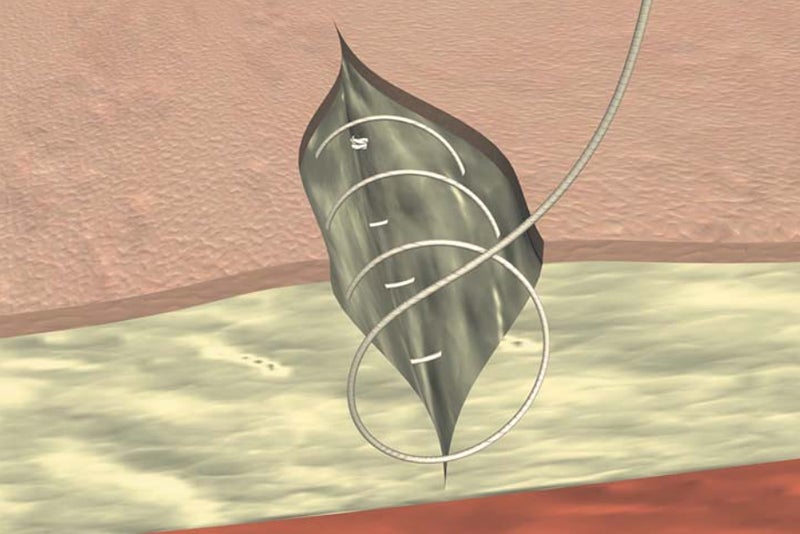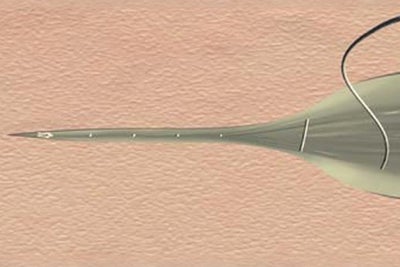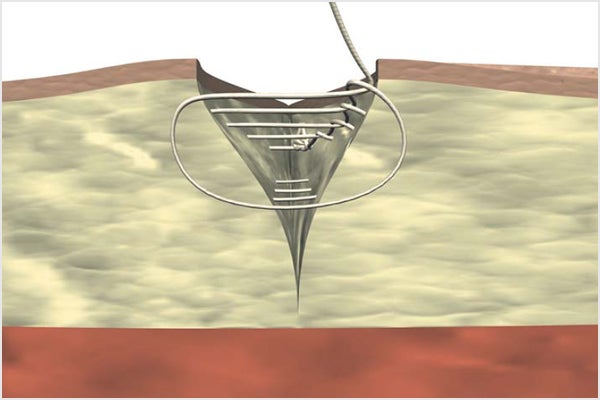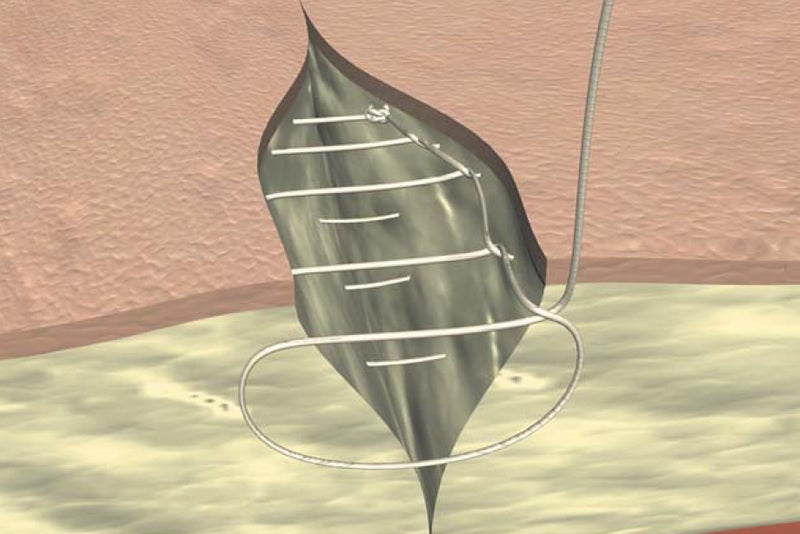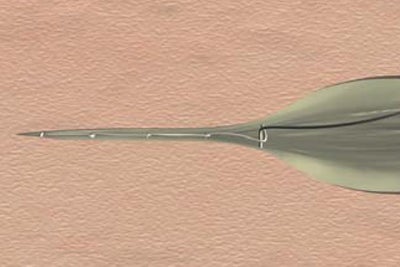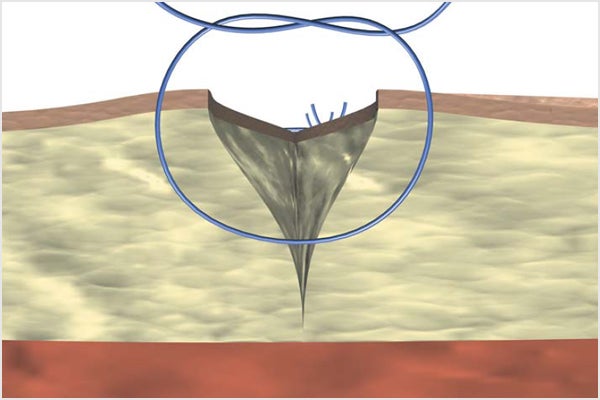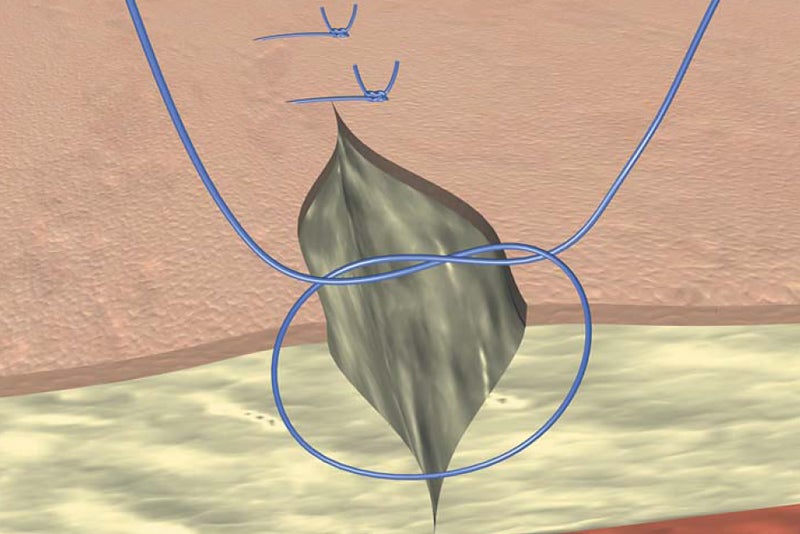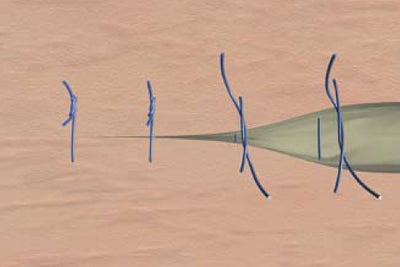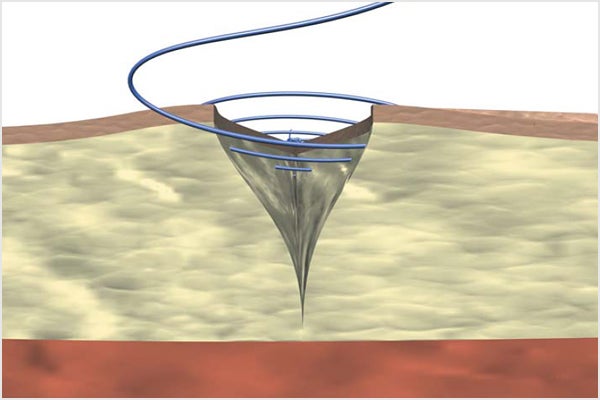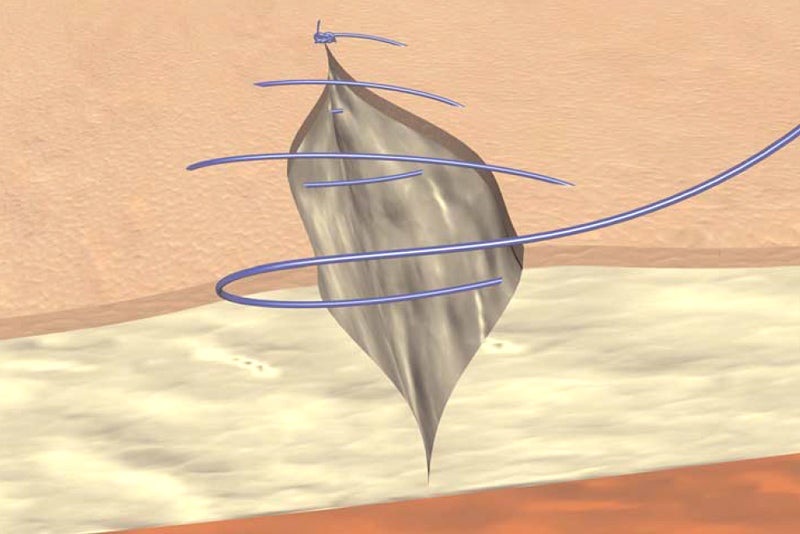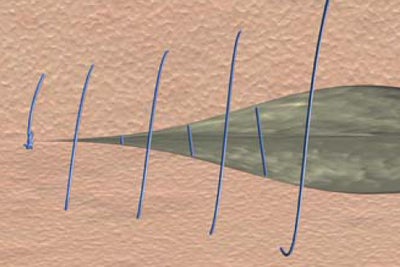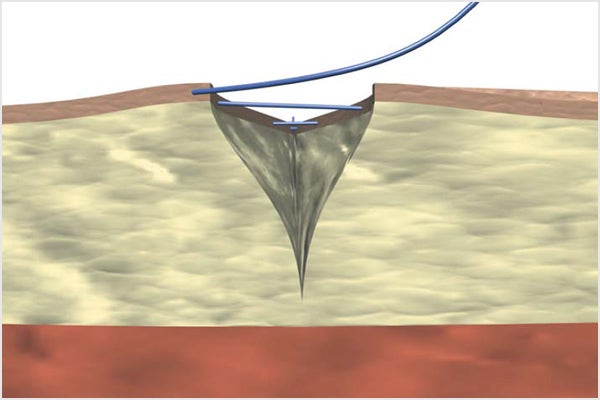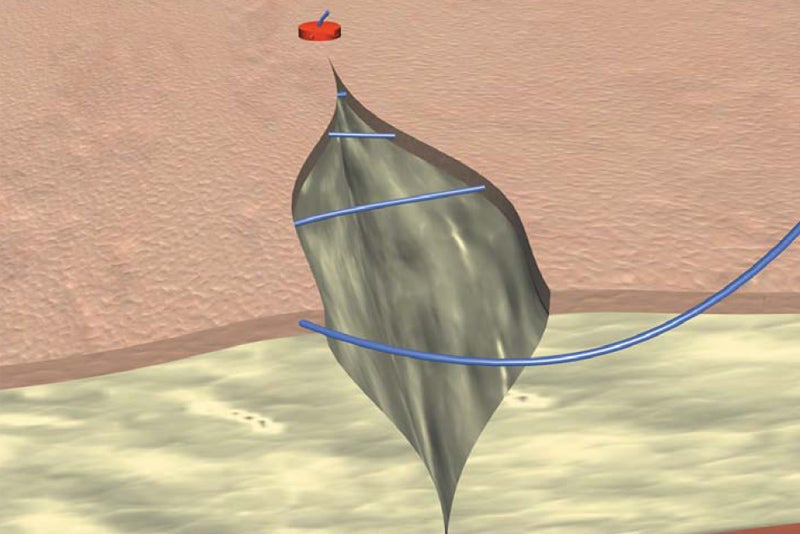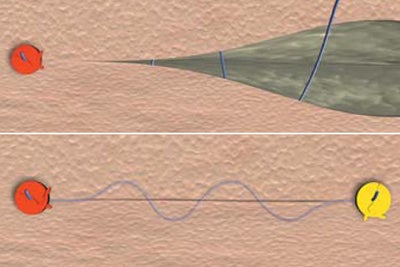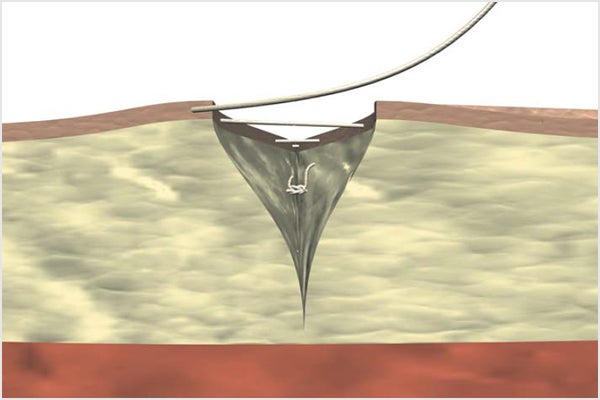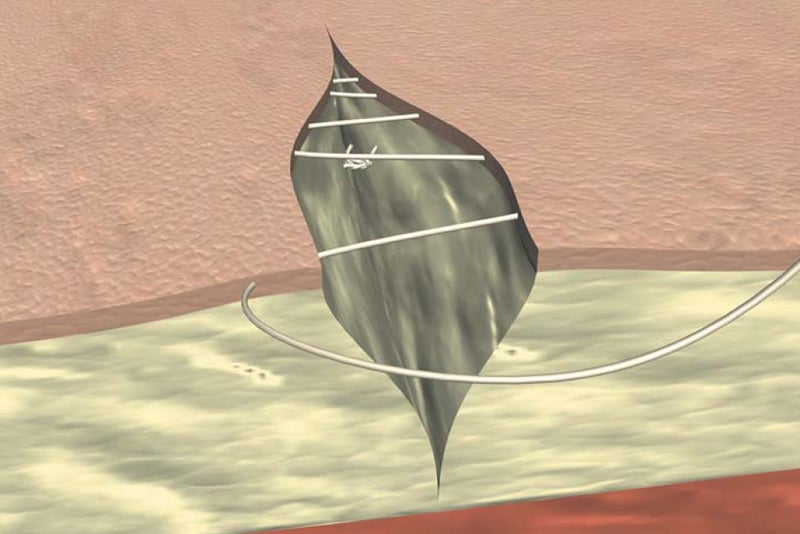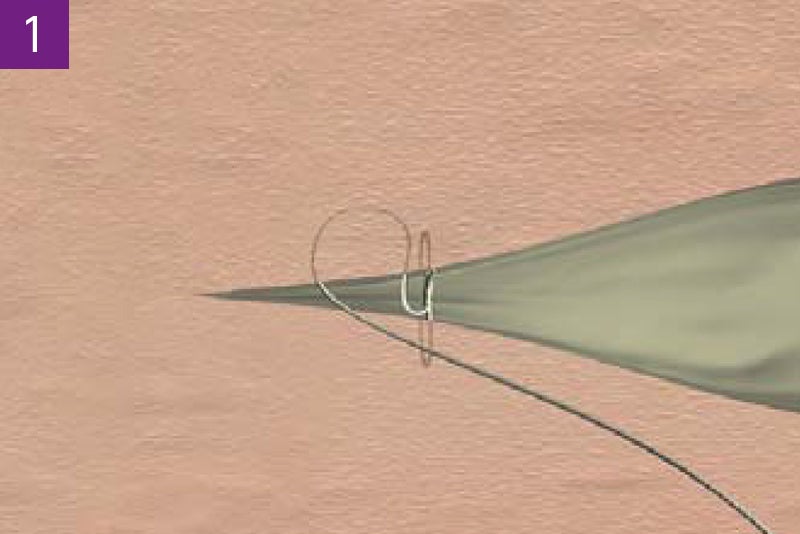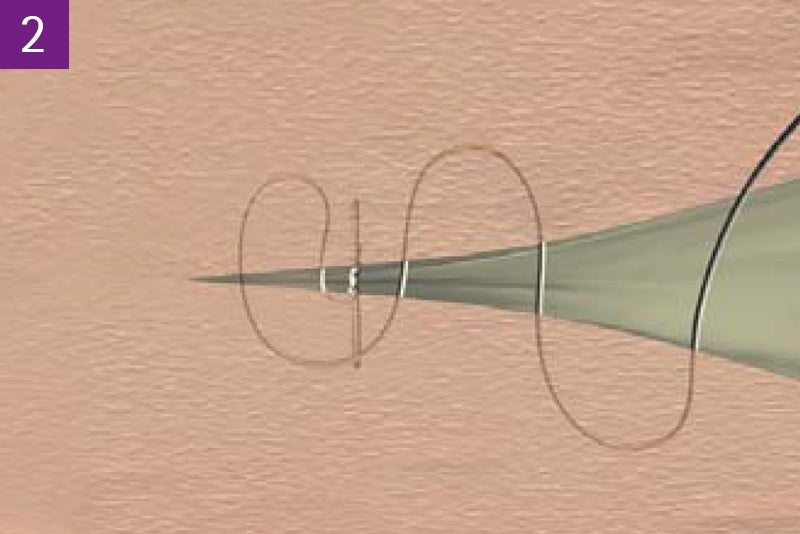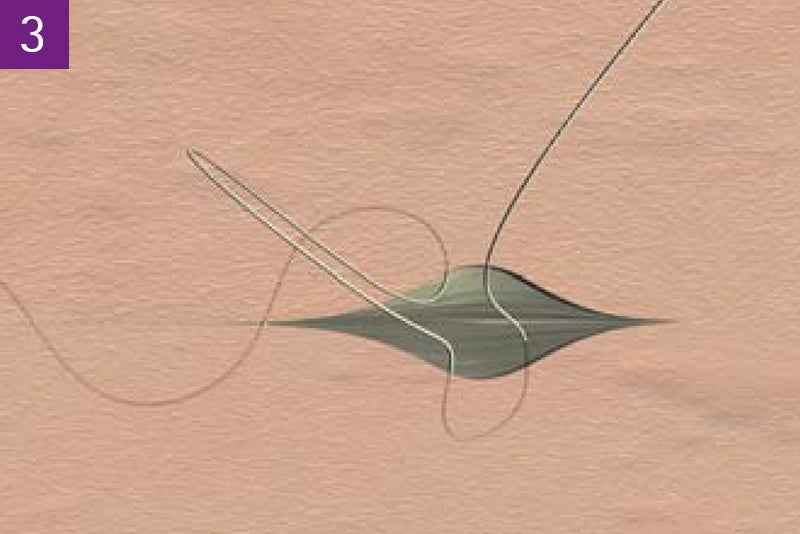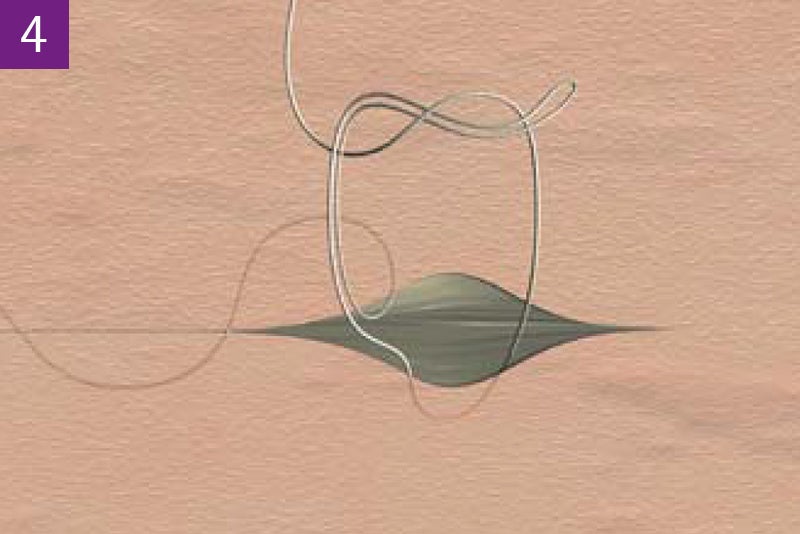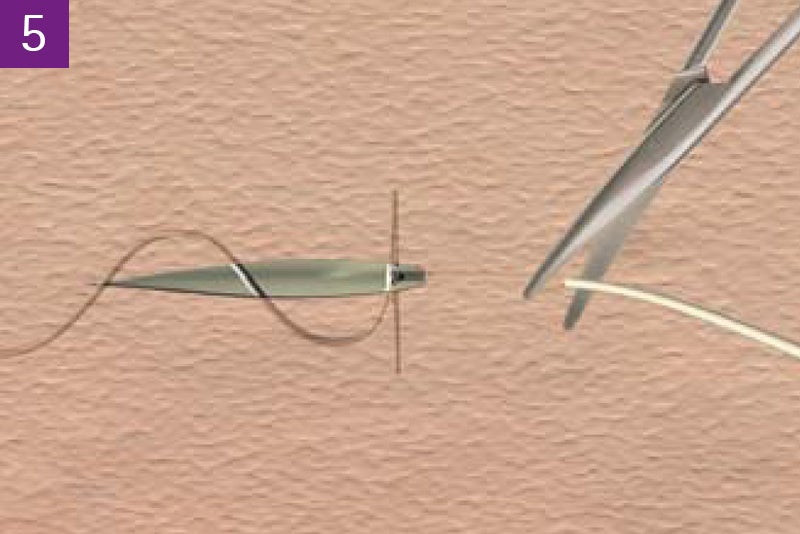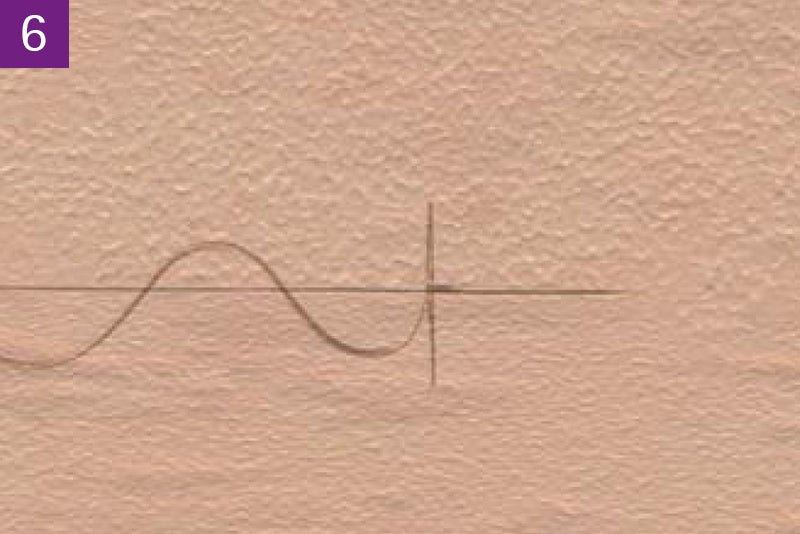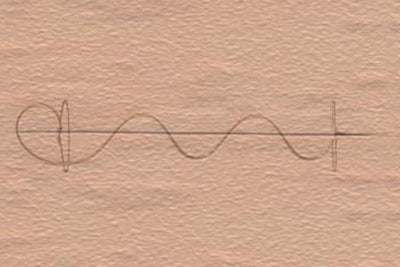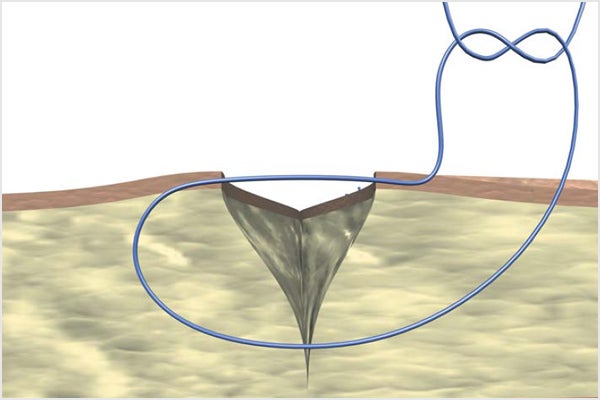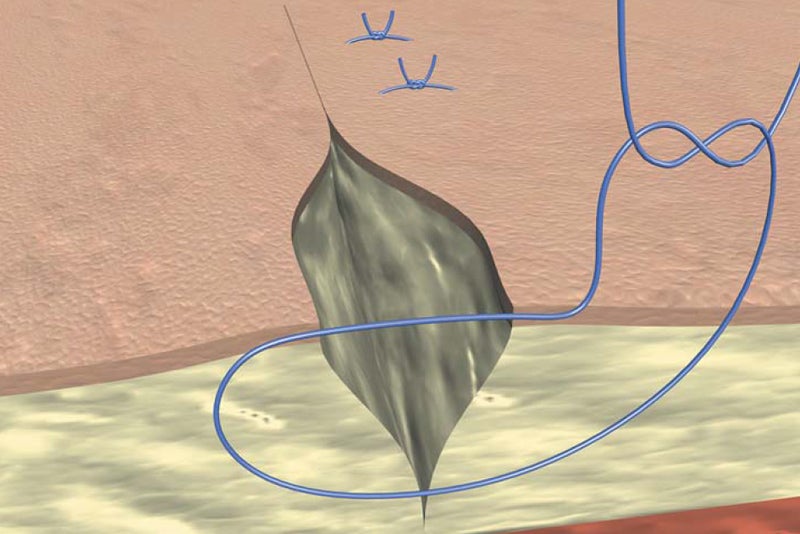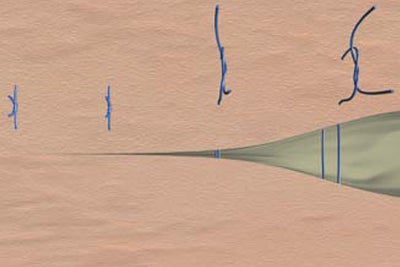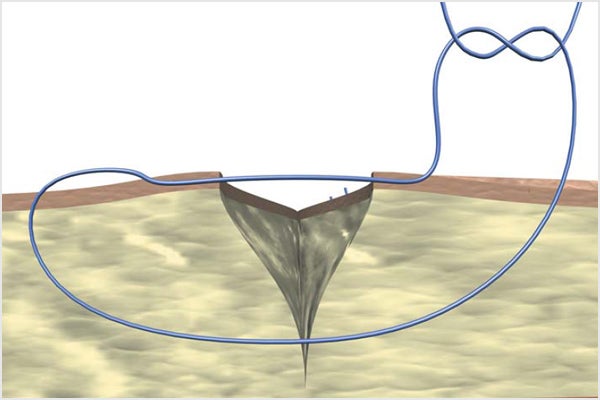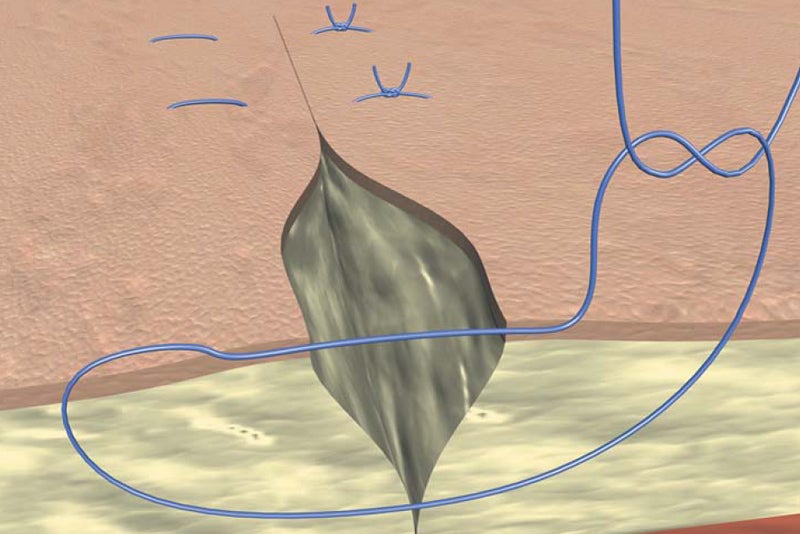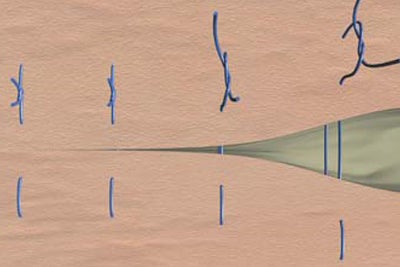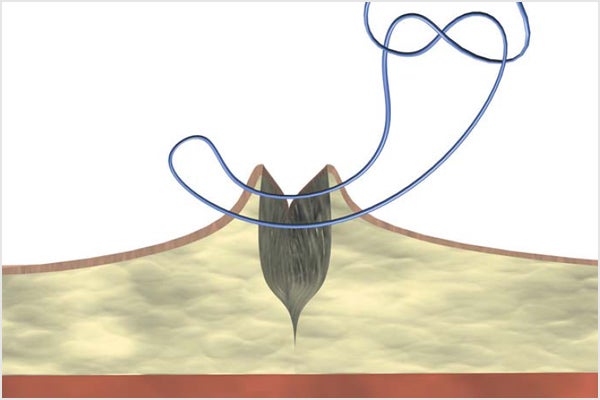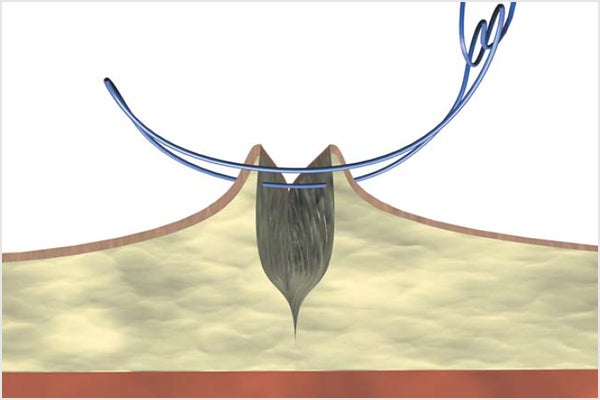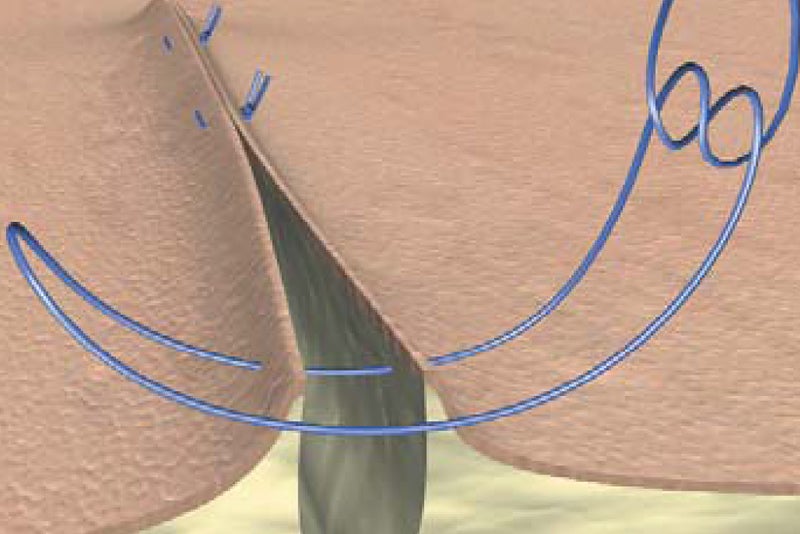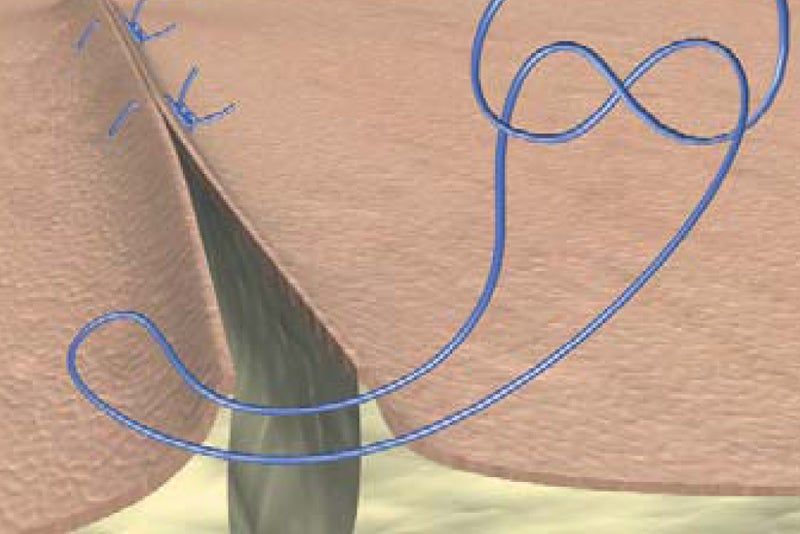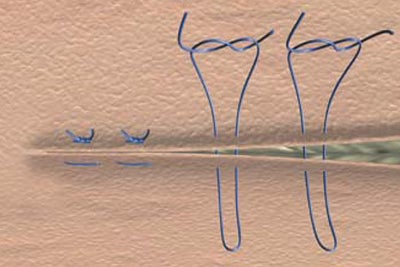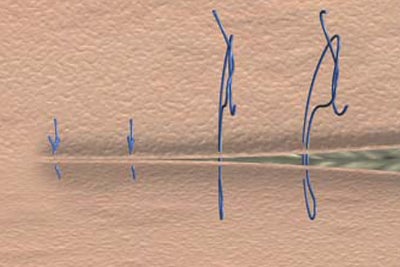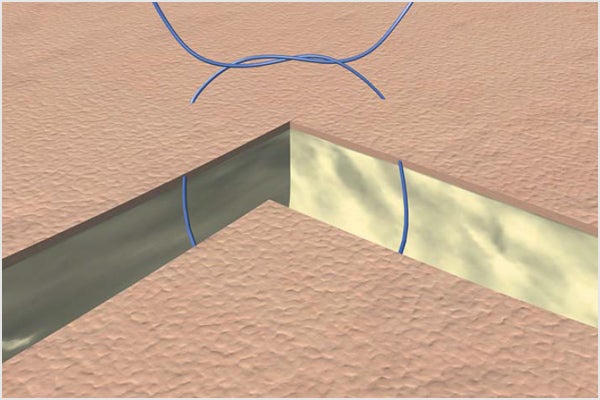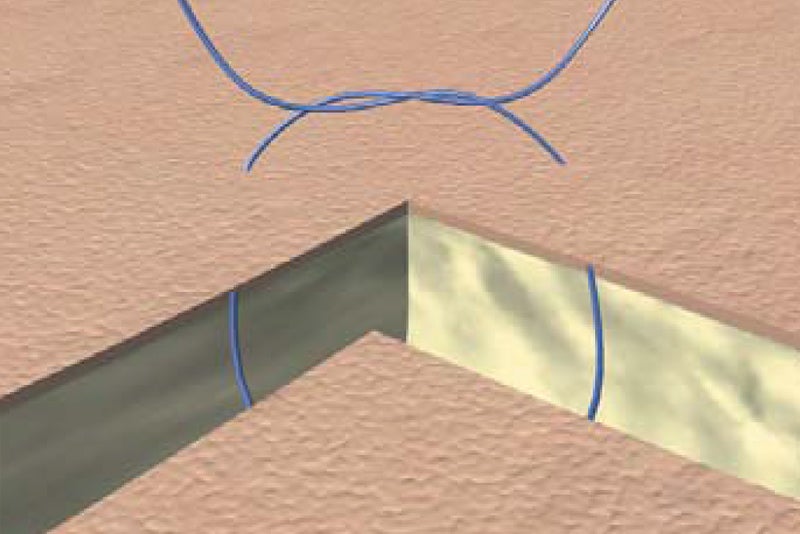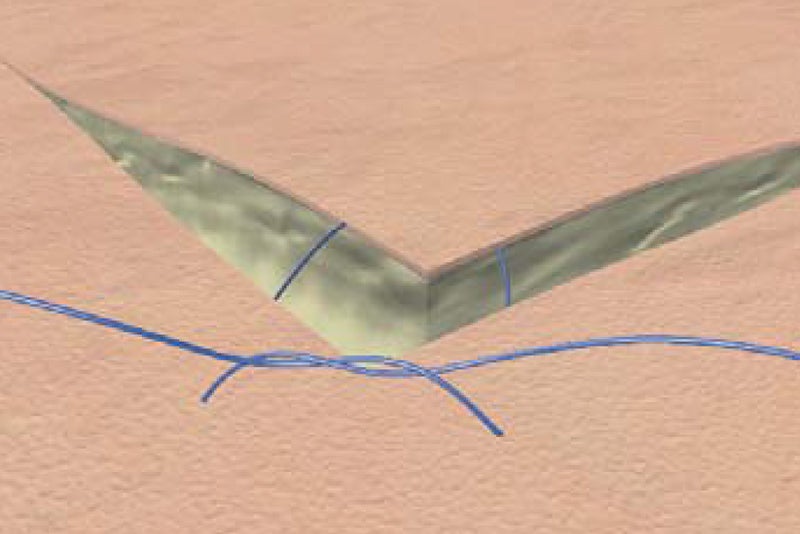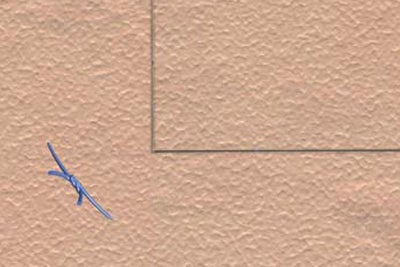Plastic and Reconstructive Surgery
Simple subcutaneous suture
This subcutaneous suturing technique is performed to release tension from the wound surface in order to ease the healing of the skin.
Surgeon should always try to place the knots on the deeper part of the wound. When performed in this manner, the body's reaction to the bulky knot will not take place just under the skin, and therefore the disturbance to the healing of the skin will be minimal.
Continous subcutaneous suture
This is an alternative to the simple subcutaneous stitches. Amongst its advantages is that continuous techniques are more resistant to simple stitching. In addition, continuous suturing can be performed in a faster way than simple stitches.
A disadvantage of this technique, as for all running sutures is the risk of wound dehiscence in case of suture breakage.
Continuous subcutaneous interlaced suture
This suture is performed as a variation of a continuous subcutaneous suture. The interlaced suturing technique will provide extra resistance and will retain most of the tension, making it possible to perform a tension-free skin suture. The interlaced suture acts as a antislippage suture. The higher friction provided by the threads at each passage provides a stronger hold while suturing and ensures that one stitch will not loosen while performing the next passage. Use of monofilament sutures is recommended, as they present a smoother surface that allows the surgeon to pull after each passage in order to tighten the part that has already been sutured. This suture is obtained as a normal continuous suture where the needle is passed through the loop as each stitch is performed.
Since this type of sutures has a high tensile strength, it is very useful on wounds under tension or in highly vascularised tissues that require extra haemostasis. The use of this technique on tissues with poor vascularisation is therefore not advisable and should be avoided.
Simple skin suture
This is the most common technique to close a wound. Separated stitches are performed which will hold the wound's edges together.
It is very important that, onced performed the first knot, it is positioned on one side so that it does not lie directly on the wound edge and does not disturb the healing process.
These sutures are easy to place, provide great tensile strength and are less likely to compromise blood circulation. On the other hand, they need longer time to be placed and have a higher risk of causing the so-called "railroad track" scars.
Continuous skin suture
Also known as "running" suture, this technique is mainly used with tensionfree wounds, where deeper sutures have been placed in order to minimize wound tension.
These sutures are considered to cause less scarring due to the fact that less knots are performed. Another advantage is that they are quite fast to place. Compared to simple skin sutures, one of the disadvantages of running sutures is that there is a higher risk of dehiscence if the suture breaks.
This technique is commonly used to secure the perimeter of a split- or fullthickness skin graft.
Continuous intracutaneous non-absorbable suture
Whenever there is a concern about the aesthetic results of the scar, an intracutaneous suturing technique will be the first choice.
This technique is to be used only in areas with minimal stress, for example in those where tension has been eliminated with deeper sutures.
It consists of a monofilament running within the skin, with no parts of the suture coming in and out of the wound sides. Therefore, the amount of tissue to heal is reduced to a minumum.
Strips should be placed over the wound once the intracutaneous suture has been completed.
When the healing skin has reached enough strength to keep the wound closed by itself, the suture should be removed by pulling on one of its ends. The smooth surface on the monofilament suture guarantees that it will slide easily through the skin.
Continuous intracutaneous absorbable suture
Intracutaneous suturing can also be performed with absorbable sutures, which provide the advantage for the surgeon (and patient) that no second visit needs to be scheduled in order to extract the suture, as it will slowly be degraded by the tissues. However, some surgeons prefer to avoid this whenever possible in order to reduce to a minimum the amount of foreign material remaining in the wound, as it will only be disturbing the correct healing process.
Strips should be placed over the wound once the intracutaneous suture has been completed.
Remember that intracutaneous suture are to be used only where there is an absence of tension at the skin level.
Algoewer Suture
In some cases, the surgeon wants to avoid subcutaneous suturing dued to the high risk of infection.
Performing a common skin suturing technique might present a risk of wound dehiscence, and strong sutures will be needed in order to provide a firm hold. At the same time, this suture will have to close the subcutaneous space.
Keep in mind that this suturing technique should be avoided wherever a good cosmetic result is important.
Donati suture
This is a variation of the Allgöwer suture. In this case, the suture crosses the skin at 4 points for each stitch. Therefore, although providing a firmer hold, the risk of poor aesthetic results is increased.
Mattress suture
This suturing technique is used when the wound edges are not close enough to each other to allow tension-free healing. Since a larger amount of tissue is incorporated within the suture passage, tension is well held under the skin edges.
One of the disadvantages of this technique is the danger of surface scarring due to increased tension across the wound and also to the fact that the suture enters the skin 4 times on each stitch. However, this effect can be avoided by early removal of the sutures once the tissue has recovered enough strength to be held together without any extra support (5-7 days). If left longer, it is highly recommended to use bolsters in order to minimize suture strangulation of the tissues.
This suturing technique is also used in cases where eversion of the wound edges is desired in order to counteract against the roll-under effect that might happen secondary to tissue contraction during healing.
Mattress sutures are specially used in areas where the wound edges tend to invert (e. g. wound on a concave surface). The use of these sutures is limited in areas where a cosmetic result is important. There are two variants of this technique: horizontal and vertical mattress sutures.
Corner suture
We have to take into account that not always the wound edges will be straight and parallel to each other. In some cases, the edges can be irregular or twisty. Here we present a common case where the wound follows a "corner" pattern.
It is of vital importance that this corner is sutured in the right manner in order to avoid necrosis of the tissue. A simple stitch should never be performed as it carries a high risk of necrosis.
Instead, the suturing technique to be used should be an intracutaneous suture knotted on the surface at the outer side of the wound as shown on the pictures below.
